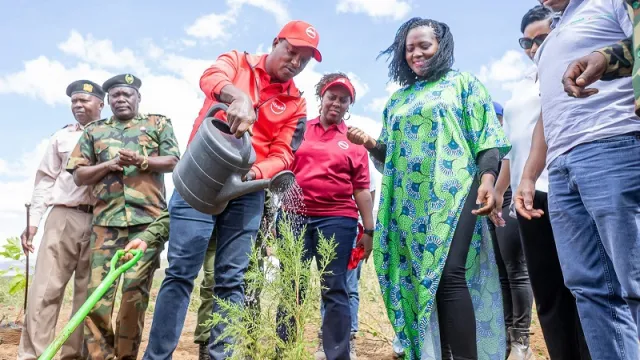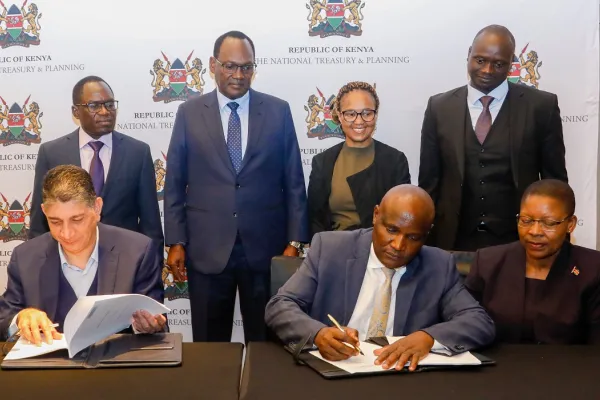Fighting climate change with native tree species

Fighting climate change with native tree species
With the devastating effects of climate change taking a toll on Kenya, efforts are underway to tap sturdier forest tree species with a view to bringing back devastated forests that once were home to billions of indigenous trees.
Telco giant Safaricom, and lender Absa Kenya in liaison with the government and other entities have launched the planting of 10,000 indigenous trees in Kinale Forest, Kiambu County, a welcome boost to President William Ruto to plant 15 billion trees.
At the launch this week where telco giant Safaricom unveiled an air quality monitoring application they're developing, Environment Cabinet Secretary Soipan Tuya led staff of Safaricom, Absa Kenya, Huawei, and other partner organizations in planting 300 trees in Kinale Forest.
Located about 60 kilometres from the capital along the Nairobi- Naivasha highway, Kinale Forest is a vital water catchment area covering over 10,500 hectares and home to Theta dam and Thiririka Falls and is also a hiking destination for local tourists seeking to unwind from city life.
In 2020, Absa Kenya unveiled its Sustainability Commitment Agenda targeting to plant 10 million trees in the already degraded Kinale Forest, South Marmanet Forest in Laikipia County, Kakamega Forest, Kaptagat Forest, South Kinangop Forest, Njukiri Forest, and Kwa Jomvu Forest among others by 2025.
"We believe that partnerships are the most effective means to facilitating change and we are excited to partner with Safaricom to create a bigger environmental impact and mitigate climate change," Absa Kenya interim CEO Yusuf Omari.
Safaricom lauded the collaboration framework with the Kenya Forest Service on Kinale Forest noting that it will help the telco plant an estimated five million trees by 2025 and help alleviate the effects of climate change while developing a sustainable future for all.
"I want to re-emphasise the role of partnerships, we understand that in order to deliver the impact at a large scale we need to form partnerships," said Peter Ndegwa, CEO, Safaricom.
Safaricom is banking on the project to offset its carbon footprint while at the same time enriching the lives of communities across Kenya.
The government through the Ministry of Environment and the Kenya Forest Association has put measures to ensure the project is achieved by 2032.
Under the Plantation Establishment And Livelihood Improvement Scheme, local community will be allowed to use forest land for food crop production while at the same time taking care of the trees.
A total of 40 primary schools per county will also be incorporated in aforestation projects across Kenya to grow forest cover to 30 percent with a particular focus on their school compounds.
The government is also liaising with Community Forest Associations to plant 3000 trees every week with a target of covering 10.6 million hectares of land.
Kenya has set an ambitious plan to realize 28 percent forest cover in seven years from the current 8.8 percent as part of efforts to steer clear of the negative effects of climate change.



